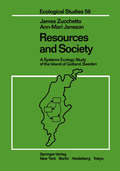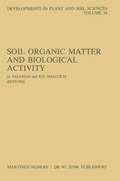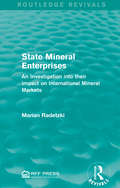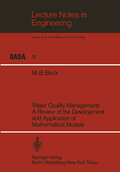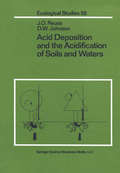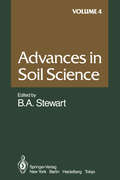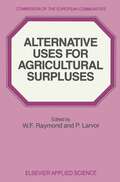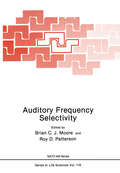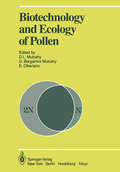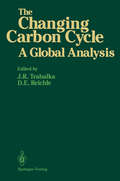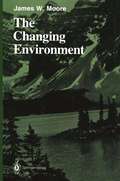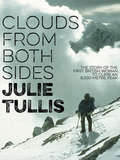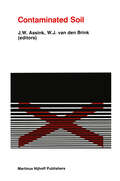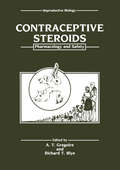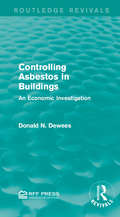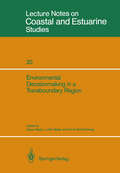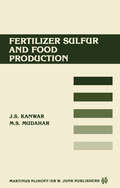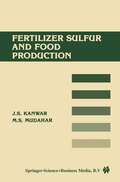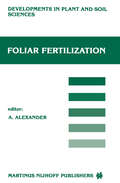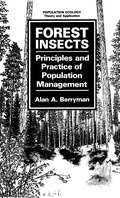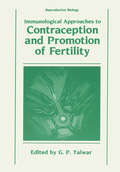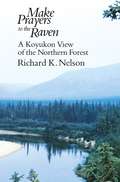- Table View
- List View
Resources and Society: A Systems Ecology Study of the Island of Gotland, Sweden (Ecological Studies #56)
by James Zucchetto Ann-Mari JanssonAlthough this book is about a specific area of the world (i.e., Gotland, Sweden), the interdisciplinary nature of the study, with regard to resources, environment, and society, makes it of interest to a number of fields. We have tried to make this book readable for a wide variety of interested parties including systems ecologists, environmental scientists, resource economists, geographers, regional planners, and regional scientists, as well as those interested in Nordic conditions. Since this project was part of UNESCO's Man and the Biosphere (MAB) pro gram, this book should be of general interest to the international community. This book is certainly not a textbook, but we see it as being useful for courses in regional analysis with plenty of examples for illustrating analysis and models related to energy, environment, and economics, or to the general field of systems ecology. An instructor could, of course, supplement the material on systems and models with other sources. We hope this small book will serve as a helpful example of the analysis of the complex interdisciplinary problems associated with resources and society. In Chapter 1, we present a brief introduction to the Gotland study as well as to some of the concepts and theories that have guided our investigations.
Soil Organic Matter and Biological Activity (Developments in Plant and Soil Sciences #16)
by D. Vaughan R. E. MalcolmIt has long been recognized that soil organic matter is the key to soil fertility. As a nutrient store it gradually provides essential elements which the soil cannot retain for long in inorganic form. It buffers growing plants against sudden changes in their chemical environment and preserves moisture in times of drought. It keeps the soil in a friable, easily penetrated physical condition, well-aerated and free draining, providing young seedlings with an excellent medium for growth. But it has another property, the nature and extent of which have been the subject of argu ment and controversy ever since scientists began to study the soil, and that is its ability to affect growth directly, other than by providing nutrient elements. Any one wishing to learn about these effects has been faced with a daunting mass of literature, some confusing, often contradictory, and spread through a multitude of journals. Individual aspects have been covered from time to time in reviews but there has obviously been a need for a modern authoritative text book dealing with the many facets of this subject, so the publication of this volume is timely. The editors and authors are all specialists in their fields, fully familiar with the com plex nature of soil organic matter and with the particular difficulties arising in any study of its properties. Where controversies exist they have presented all sides of the argument and have highlighted areas where further work is badly needed.
State Mineral Enterprises: An Investigation into their Impact on International Mineral Markets (Routledge Revivals)
by Marian RadetzkiState ownership in mineral industries has increased massively from the 1950’s affecting the world mineral sector greatly. Originally published in 1985, this study analyses the effects this had on the international market covering topics such as state takeovers of mineral firms, price stabilisation methods, state-owned enterprises in developing countries and whether state ownership will negatively impact private multinational companies. This title will be of interest to students of environmental studies.
State Mineral Enterprises: An Investigation into their Impact on International Mineral Markets (Routledge Revivals)
by Marian RadetzkiState ownership in mineral industries has increased massively from the 1950’s affecting the world mineral sector greatly. Originally published in 1985, this study analyses the effects this had on the international market covering topics such as state takeovers of mineral firms, price stabilisation methods, state-owned enterprises in developing countries and whether state ownership will negatively impact private multinational companies. This title will be of interest to students of environmental studies.
Water Quality Management: A Review of the Development and Application of Mathematical Models (Lecture Notes in Engineering #11)
by M.B. BeckDuring 1978-1982 the International Institute for Applied Systems Analysis (IIASA) was responsible for a research project on Environmental Quality Control and Management. The project was begun under the direction of Professor O. F. Vasiliev (from the Institute of Hydrodynamics of the Siberian Branch of the USSR Academy of Sciences) and was subsequently led by myself. This review is very much a re'fiection of that IIASA project. The major themes of the IIASA project were: (i) research into the methodological aspects of modeling river and lake sys tems [some of the principal results of this research appear in M. B. Beck and G. van Straten (eds. ) (1983), Uncertainty and Forecasting of Water Quality (Springer, Berlin (West)), and in K. Fedra (1983), Environmental Modeling Under Uncertainty: Monte Carlo Simulation (IIASA Research Report RR-83-28)]; (ii) case studies in the application of mathematical models to lake eutrophi cation control [results of which are summarized in L. Somlyody, S. Hero dek, and J. Fischer (eds. ) (1983), Eutrophication of Shallow Lakes: Model ing and Management (The Lake Balaton Case Study) (IIASA Collaborative Proceedings CP-83-S3), and in K. Fedra (1983), A Modular Approach to Comprehensive System Simulation: A Case Study of Lakes and Watersheds (in W. K. Lauenroth, G. V. Skogerboe, and M. Flug (eds. ), Analysis of Ecological Systems: State-of-the-Art in Ecological Modelling, pp. 195-204. Elsevier, Amsterdam)]; iv (iii) a policy study of operational water qua,lity management [M. B. Beck (1981), Operational Water Quality Management: Beyond Planning and Design (IIASA Executive Report ER-7)].
Acid Deposition and the Acidification of Soils and Waters (Ecological Studies #59)
by J.O. Reuss D.W. JohnsonThe majority of this book was written in 1983-84 while the senior author was a Visiting Scientist at Oak Ridge National Laboratory (ORNL) in Oak Ridge, Tennessee. We believe that the approach to the problem of acid deposition effects on soils and waters developed during this collaboration contains ele ments that are significantly different from most prior work in this area. Some of the material and the software used in the development of these concepts stem from earlier individual efforts of the authors. However, what we believe to be the more significant concepts concerning the processes by which alkalinity may be developed in acid soil solutions, and by which acid deposition may contrib ute to the loss of this alkalinity, were the result of this collaboration. The ultimate usefulness of these concepts in understanding and dealing with various aspects of the problems associated with acid deposition cannot be adequately gauged at the present time. They must first withstand tests of con sistency with available observation, and of direct experimentation. It is our hope that dissemination through this book will facilitate this process within the scientific community. The authors wish to thank the administration of the Environmental Science Division at ORNL, and the College of Agricultural Sciences at Colorado State University for their support in arranging this collaboration. We also wish to express our appreciation for the financial support provided by EPA. Personal thanks are due to Dr.
Advances in Soil Science: Volume 4 (Advances in Soil Science #4)
by L. R. Ahuja W. H. Gardner D. R. Keeney K. L. Sahrawat I. SzabolcsThe world needs for food and fiber continue to increase. Population growth in the developing countries peaked at 2. 4 percent a year in 1965, and has fallen to about 2. 1 percent. However, in many developing countries almost half the people are under 15 years of age, poised to enter their productive and reproductive years. The challenges to produce enough food for this growing population will remain great. Even more challenging is growing the food in the areas of greatest need. Presently the world has great surpluses of food and fiber in some areas while there are devastating deficiencies in other areas. Economic conditions and the lack of suitable infrastructure for distribution all too often limit the alleviation of hunger even when there are adequate supplies, sometimes even within the country itself. World hunger can only be solved in the long run by increasing crop production in the areas where the population is growing most rapidly. This will require increased efforts of both the developed and developing countries. Much of the technology that is so successful for crop production in the developed countries cannot be utilized directly in the developing countries. Many of the principles, however, can and must be adapted to the conditions, both physical and economic, of the developing countries.
Auditory Frequency Selectivity (Nato Science Series A: #119)
by Brian MooreOne of the most fundamental aspects of the auditory system is its frequency selectivity - the ability to resolve a complex sound into frequency compOhents. This ability plays a role in many aspects of auditory perception, including: the masking of one sound by another; the perception of pitch for pure tones and complex tones; the perception of timbre; the perception of the relative phase of components in complex sounds; and the perception of loudness. Over the last decade, there have been considerable advances in our understanding of frequency selectivity, both at the physiological and psychophysical level, and rapid progress continues to be made. This book summarizes the proceedings of a NATO Advanced Research Workshop on Auditory Frequency Selectivity which was held in Wolfson College, Cambridge from June 23rd to 27th, 1986. The Workshop brought together leading researchers from all disciplines relevant to the topic, with the aim of reviewing and consolidating the latest research findings, and identifying areas of uncertainty or controversy where further research is needed. The book is aimed primarily at research scientists and research students in the fields of psychology, audiology, auditory physiology, biophysics, medicine, acoustical engineering, noise control, communication and speech science. It should also be useful for advanced undergraduates in these disciplines. A feature of the book is that it includes summaries of the discussions which followed the presentation of each paper at the Workshop.
Biotechnology and Ecology of Pollen: Proceedings of the International Conference on the Biotechnology and Ecology of Pollen, 9–11 July, 1985, University of Massachusetts, Amherst, MA, USA
by David L. Mulcahy Gabriella Bergamini Mulcahy Ercole OttavianoIn Recognition of the Forgotten Generation D. L. MULCAHyl Pollen was long believed to serve primarily a single function, that of delivering male gametes to the egge A secondary and generally overlooked value of pollen is that it serves to block the transmission of many defective alleles and gene combinations into the next generation. This latter function comes about simply because pollen tubes carrying defective haploid genotypes frequently fail to complete growth through the entire length of the style. However, the beneficial consequences of this pollen selection are diluted by the fact that the same deleterious genotypes are often transmitted through the egg at strictly mendelian frequencies (Khush, 1973). Gene expression in the pollen might thus at least appear to be a phenomenon of trivial consequence. Indeed, Heslop-Harrison (1979) rightly termed the gametophytic portion of the angiosperm life cycle, the "forgotten generation." This neglect, however, came about despite subtle but constant indications that pollen is the site of intense gene activity and selection. For example, Mok and Peloquin (1975) demonstrated that relatively heterozygous diploid pollen shows heterotic characteristics whereas relatively homozygous diploid pOllen does not. This was proof positive that genes are expressed (that is, transcribed and translated) in the pollen. 1 Department of Botany, University of Massachusetts Amherst, MA 01003, USA viii However, the implications for pollen biology of even this recent and well known study were not widely recognized.
The Changing Carbon Cycle: A Global Analysis
by David E. Reichle John R. TrabalkaThe United States Government, cognizant of its responsibilities to future generations, has been sponsoring research for nine years into the causes, effects, and potential impacts of increased concentrations of carbon dioxide (C0 ) in the atmosphere. Agencies such as the National Science Foun 2 dation, National Oceanic and Atmospheric Administration, and the U.S. Department of Energy (DOE) cooperatively spent about $100 million from FY 1978 through FY 1984 directly on the study of CO • The DOE, as the 2 lead government agency for coordinating the government' s research ef forts, has been responsible for about 60% of these research efforts. William James succinctly defined our purpose when he stated science must be based upon " ... irreducible and stubborn facts." Scientific knowledge can and will reduce the present significant uncertainty sur rounding our understanding of the causes, effects, and potential impacts of increasing atmospheric CO2• We have come far during the past seven years in resolving some underlyinig doubts and in narrowing the ranges of disagreement. Basic concepts have become less murky. Yet, much more must be accomplished; more irreducible and stubborn facts are needed to reduce the uncertainties so that we can improve our knowledge base. Uncertainty can never be reduced to zero. However, with a much improved knowledge base, we will be able to learn, under stand, and be in a position to make decisions.
The Changing Environment: World-system History And Global Environmental Change (Springer Series on Environmental Management)
by James W. MooreThis series is dedicated to serving the growing community of scholars and practitioners concerned with the principles and applications of environmental management. Each volume is a thorough treatment of a specific topic of importance for proper management practices. A fundamental objective of these books is to help the reader discern and implement man's stewardship of our environment and the world's renewable resources. For we must strive to understand the relationship between man and nature, act to bring harmony to it, and nurture an environment that is both stable and productive. These objectives have often eluded us because the pursuit of other individual and societal goals has diverted us from a course of living in balance and the environment. At times, therefore, the environmental manager may have to exert restrictive control, which is usually best applied to man, not nature. Attempts to alter or harness nature have often failed or backfired, as exemplified by the results of imprudent use of herbicides, fertilizers, water, and other agents. Each book in this series will shed light on the fundamental and applied aspects of environmental management. It is hoped that each will help solve a practical and serious environmental problem.
Clouds from Both Sides: The story of the first British woman to climb an 8,000-metre peak
by Julie Tullis‘If I could choose a place to die, it would be in the mountains.’Clouds from Both Sides is the autobiography of Julie Tullis, the first British woman to climb an 8,000-metre peak – Broad Peak – and the first to reach the summit of K2, the world’s second-highest mountain.A truly remarkable woman, Julie describes her early days in a London disrupted by World War II; her family life, climbing, teaching and living by the sandstone outcrops of High Rocks and Harrison’s Rocks in Tunbridge Wells, Kent; and her experience as a high-level mountaineer and filmmaker. Tullis demonstrates her determination and self-discipline through training to black-belt standard in both judo and aikido, and never allows financial concerns to keep her away from the high mountains – a place where she felt at peace. Filled with vivid accounts of frostbite, avalanches, snow blindness and exhilaration alongside her climbing partner Kurt Diemberger, Clouds from Both Sides takes us to Yosemite, Nanga Parbat, Everest and K2.First published in 1986 before her death, and with an additional chapter written by Peter Gillman documenting Tullis’s final, fated expedition to K2, this story is as relevant and awe inspiring today as it ever was. Tullis’s achievements are timeless and her attitudes and opinions far ahead of their time. Clouds from Both Sides is a tribute to the memory of an inspirational woman determined to strive for her dreams, an extraordinary account of her adventures and an exhilarating testament to her courage.
Contaminated Soil: First International TNO Conference on Contaminated Soil 11–15 November, 1985, Utrecht, The Netherlands
by J. W. Assink W. J. Van Den BrinkF. J. COLON Chairman of the Scientific Committee TNO Division of Technology for Society, APELDOORN, The NETHERLANDS Only these past few years have we gained an insight into the full extent of the problems associated with contaminated soils. The first efforts to take effective remedial action at contaminated sites were seriously hampered by the lack of experience, knowledge and technology. Fortunately, this handicap has been partly alleviated by the experience we have gained in the numerous cases we have had, and -unfortunately still have to deal with. This meeting on contaminated soil is the first international conference to cover such a wide variety of subjects related to the problems that confront us in practice: behaviour of contaminants in soil - impacts on public health and the enviornment - role of governments and other authorities - site investigation and analysis - techniques for remedial action - management of remedial action and risk assessment - safety - case studies This Conference has been organized by the Netherlands Organization for Applied Scientific Research (TNO) in co-operation with the Netherlands Ministry of Housing, Physical Planning and the Environment (VROM). It goes without saying that the preparation would not have been possible without the assistance of many people throughout the world and the co-operation between government, industry and research organizations.
Contraceptive Steroids: Pharmacology and Safety (The Plenum Behavior Therapy Series)
by A. T. GregoireOne of the United States Food and Drug Administration's most difficult tasks is the assessment of risk-benefit ratios for a broad spectrum of therapeutic and prophylactic drugs. Furthermore, it is now widely recog nized that no drug, chemical or even natural substance is completely devoid of risk. Nowhere has this issue been the subject of more controversy than with steroidal contraceptive drugs. Regulated as a special class of products because of their prophylactic use in healthy individuals for prevention of pregnancy rather than for treatment of disease, steroid contraceptives drugs undergo more extensive animal safety tests than any other pharmaceutical agent. This view also contemplates the availability of alternative contraceptive measures posing fewer risks, but the use of less effective methods must take into consideration the hazards associated with pregnancy itself. In April 1983, the Food and Drug Administration and the National Insti tutes of Health in cooperation with the World Health Organization, the Population Council, and the Agency for International Development sponsored a three-day workshop to evaluate current guidelines for preclinical safety studies of contraceptive drugs in light of our extensive knowledge of the side effects of marketed products. The meeting included presenta tions by experts in the fields of comparative metabolism, pharmacokinetics, pharmacology, carcinogenicity, toxicology, coagulation, lipid metabolism, epidemiology and pathology at a meeting of the Fertility and Maternal Health Drugs Advisory Committee of the National Center for Drugs and Biologics, Food and Drug Administration.
Controlling Asbestos in Buildings: An Economic Investigation (Routledge Revivals)
by Donald N. DeweesAsbestos dust is well-known for causing cancer and other life-threatening illnesses yet still contaminates countless schools, factories and office buildings. This raises the issue of the best way to deal with Asbestos; immediate removal, containment or removal at renovation or demolition. Originally published in 1986, this report aims to evaluate these methods of dealing with asbestos in relation to their cost-effectiveness to conclude the most appropriate solution. This title will be of interest to students of Environmental Studies and Economics.
Controlling Asbestos in Buildings: An Economic Investigation (Routledge Revivals)
by Donald N. DeweesAsbestos dust is well-known for causing cancer and other life-threatening illnesses yet still contaminates countless schools, factories and office buildings. This raises the issue of the best way to deal with Asbestos; immediate removal, containment or removal at renovation or demolition. Originally published in 1986, this report aims to evaluate these methods of dealing with asbestos in relation to their cost-effectiveness to conclude the most appropriate solution. This title will be of interest to students of Environmental Studies and Economics.
Environmental Decisionmaking in a Transboundary Region: (pdf) (Coastal and Estuarine Studies #20)
by Alison Rieser Judith Spiller David VanderZwaagFertilizer sulfur and food production: Research and Policy Implications for Tropical Countries
by J.S. Kanwar Mohinder S. MudaharFertilizer is a vital component of strategies for expanding foodproduction. The rapid growth in population and the widening food deficits inmany tropical countries of Asia, Africa, and Latin America call attention to those aspects of fertilization that have been neglected but are expected to yield large economic payoffs in the future. Fertilizer sulfur falls into this category. In the past fertilizer sulfur received little attention from researchers and policymakers since sulfur deficiency was not considered a serious problem. It was not a problem because of low crop yields, extensive cropping, and the incidental supply of sulfur through rain, irrigation water, manures, and sulfurcontaining fertilizers. However, the situation has changed in the last three decades. Moder nagriculture based on high crop yields, intensive cropping, improved crop varieties, and greater use of sulfur-free fertilizers and environmental regula tions restricting sulfur emissions are creating large gaps between sulfur sup ply and sulfur requirements. Sulfur deficiencies are widespread and grow ing. Consequently, the full potential of a modern agricultural system in tropical countries is not being realized. This research effort results from the recognition of the seriousness of the sulfur problem and its adverse impact on food production as well as IFDC's dedication to the development and transfer of economically ef ficient fertilizer technology to tropical countries. This study represents a comprehensive analysis of the technical and economic linkages between fer tilizer sulfur and food production, and it provides guidelines for future directions in fertilizer sulfur research and public policy.
Fertilizer sulfur and food production
by Mohinder MudaharFertilizer is a vital component of strategies for expanding foodproduction. The rapid growth in population and the widening food deficits inmany tropical countries ofAsia, Africa, and Latin America call attention to those aspects of fertilization that have been neglected but are expected to yield large economic payoffs in the future. Fertilizer sulfur falls into this category. In the past fertilizer sulfur received little attention from researchers and policymakers since sulfur deficiency was not considered a serious problem. It was not a problem because of low crop yields, extensive cropping, and the incidental supply of sulfur through rain, irrigation water, manures, and sulfurcontaining fertilizers. However, the situation has changed in the last three decades. Moder nagriculture based on high crop yields, intensive cropping, improved crop varieties, and greater use of sulfur-free fertilizers and environmental regula tions restricting sulfur emissions are creating large gaps between sulfur sup ply and sulfur requirements. Sulfur deficiencies are widespread and grow ing. Consequently, the full potential of a modern agricultural system in tropical countries is not being realized. This research effort results from the recognition of the seriousness of the sulfur problem and its adverse impact on food production as well as IFDC's dedication to the development and transfer of economically ef ficient fertilizer technology to tropical countries. This study represents a comprehensive analysis ofthe technical and economic linkages between fer tilizer sulfur and food production, and it provides guidelines for future directions in fertilizer sulfur research and public policy.
Foliar Fertilization: Proceedings of the First International Symposium on Foliar Fertilization, Organized by Schering Agrochemical Division, Special Fertilizer Group, Berlin (FRG) March 14–16, 1985 (Developments in Plant and Soil Sciences #22)
by A. AlexanderProceedings of the First International Symposium on Foliar Fertilization, organized by Schering Agrochemical Division, Special Fertilizer Group, Berlin (FRG), March 14-16, 1985
Forest Insects: Principles and Practice of Population Management (Population Ecology)
by Alan A. BerrymanThis book is intended as a general text for undergraduates studying the manage ment of forest insect pests. It is divided into four parts: insects, ecology, manage ment, and practice. Part I, Insects, contains two chapters. The first is intended to provide an overview of the general attributes of insects. Recognizing that it is impossible to adequately treat such a diverse and complex group of organisms in such a short space, I have attempted to highlight those insectan characteristics that make them difficult animals to combat. I have also tried to expose the insects' weak points, those attributes that make them vulnerable to manipulation by human actions. Even so, this first chapter will seem inadequate and sketchy to many of my colleagues. Ideally, this book should be used in conjunction with a laboratory manual covering insect anatomy, physiology, biology, behavior, and classifica tion in much greater depth-in fact, this is how I organize my forest entomology course. It is hoped that this first chapter will provide nonentomologists with a general feel for the insects and with a broad understanding of their strengths and weaknesses, while Chapter 2 will provide a brief overview of the diverse insect fauna that attacks the various parts of forest trees and their products.
Immunological Approaches to Contraception and Promotion of Fertility (Reproductive Biology)
by G. P. TalwarContraceptive research has entered the new age of vaccines. Realistic prospects exist for the development of an entirely new battery of vaccines for use in human and veterinary medicine. Among them may be anti-fertility vaccines, based on physiological mechanisms applicable to either the female or male. This volume is a comprehensive review - a status report - of the subjects including fundamental work on the search for useful epitopes and ranging to applied vaccinology. One vaccine to prevent pregnancy, for use by women, has already been studied extensively. G.P. Talwar, the volume's editor and his colleagues in New Oelhi, India, published in 1976 a landmark series of papers describing the immunological properties of a preparation consisting of the alum-precipitated beta-subunit of human chorionic gonadotropin (hCG) chemically linked to tetanus toxoid. The principle of enhancing antigenicity of a self-protein by linkage of the epitope to a carrier protein was employed and tested clinically. These trials, carried out under the auspices of the Indian Council for Medical Research, were the first application of the carrier protein concept for a vaccine for human use. The encouraging results stimulated a wave of research not only on the use of hCG-based vaccines, but on other antigens as well.
Make Prayers to the Raven: A Koyukon View of the Northern Forest
by Richard K. Nelson"Nelson spent a year among the Koyukon people of western Alaska, studying their intimate relationship with animals and the land. His chronicle of that visit represents a thorough and elegant account of the mystical connection between Native Americans and the natural world."—Outside "This admirable reflection on the natural history of the Koyukon River drainage in Alaska is founded on knowledge the author gained as a student of the Koyukon culture, indigenous to that region. He presents these Athapascan views of the land—principally of its animals and Koyukon relationships with those creatures—together with a measured account of his own experiences and doubts. . . . For someone in search of a native American expression of 'ecology' and natural history, I can think of no better place to begin than with this work."—Barry Lopez, Orion Nature Quarterly "Far from being a romantic attempt to pass on the spiritual lore of Native Americans for a quick fix by others, this is a very serious ethnographic study of some Alaskan Indians in the Northern Forest area. . . . He has painstakingly regarded their views of earth, sky, water, mammals and every creeping thing that creepeth upon the earth. He does admire their love of nature and spirit. Those who see the world through his eyes using their eyes will likely come away with new respect for the boreal forest and those who live with it and in it, not against it."—The Christian Century "In Make Prayers to the Raven Nelson reveals to us the Koyukon beliefs and attitudes toward the fauna that surround them in their forested habitat close to the lower Yukon. . . . Nelson's presentation also gives rich insights into the Koyukon subsistence cycle through the year and into the hardships of life in this northern region. The book is written with both brain and heart. . . . This book represents a landmark: never before has the integration of American Indians with their environment been so well spelled out."—Ake Hultkrantz, Journal of Forest History
Make Prayers to the Raven: A Koyukon View of the Northern Forest
by Richard K. Nelson"Nelson spent a year among the Koyukon people of western Alaska, studying their intimate relationship with animals and the land. His chronicle of that visit represents a thorough and elegant account of the mystical connection between Native Americans and the natural world."—Outside "This admirable reflection on the natural history of the Koyukon River drainage in Alaska is founded on knowledge the author gained as a student of the Koyukon culture, indigenous to that region. He presents these Athapascan views of the land—principally of its animals and Koyukon relationships with those creatures—together with a measured account of his own experiences and doubts. . . . For someone in search of a native American expression of 'ecology' and natural history, I can think of no better place to begin than with this work."—Barry Lopez, Orion Nature Quarterly "Far from being a romantic attempt to pass on the spiritual lore of Native Americans for a quick fix by others, this is a very serious ethnographic study of some Alaskan Indians in the Northern Forest area. . . . He has painstakingly regarded their views of earth, sky, water, mammals and every creeping thing that creepeth upon the earth. He does admire their love of nature and spirit. Those who see the world through his eyes using their eyes will likely come away with new respect for the boreal forest and those who live with it and in it, not against it."—The Christian Century "In Make Prayers to the Raven Nelson reveals to us the Koyukon beliefs and attitudes toward the fauna that surround them in their forested habitat close to the lower Yukon. . . . Nelson's presentation also gives rich insights into the Koyukon subsistence cycle through the year and into the hardships of life in this northern region. The book is written with both brain and heart. . . . This book represents a landmark: never before has the integration of American Indians with their environment been so well spelled out."—Ake Hultkrantz, Journal of Forest History
